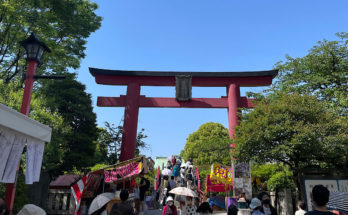The long summer has finally come to an end and autumn is here now.
Autumn in Japan has a comfortable climate and people enjoy things such as traveling, sports and viewing art. On top of that, we can enjoy autumn fruit or sweets made of seasonal ingredients.
Today, I’ll introduce some common types of fruit that appear in autumn and winter and go over some ways to show you how we eat them in the Japanese way.
This blog is a continuation from Part 1: Fruit Kingdom of Japan: From Spring to Summer. If you are interested, please visit the link below.
Grapes (葡萄 ぶどう)
Grapes were introduced to Japan through the silk road during the Nara period (710〜794 AD). Since the Kamakura period (1185〜1333 AD), grapes have been cultivated and improved through selective breeding in Katsunuma (勝沼) in Koshu (甲州), present-day Yamanashi (山梨).
The main growing districts are Yamanashi, Nagano, Okayama, Hyogo and Hokkaido. However, in terms of the product itself, Yamanashi has been the top producer and is called the fruit kingdom. Katsunuma is also famous for its Japanese wine.
The grapes are categorized into three varieties which are red, black and yellow green. Now, let’s take a look at some of the popular kinds of grapes in Japan.
Here are three of the most common types of red grapes: Delaware, Queen Rouge and Kaiji (甲斐路).
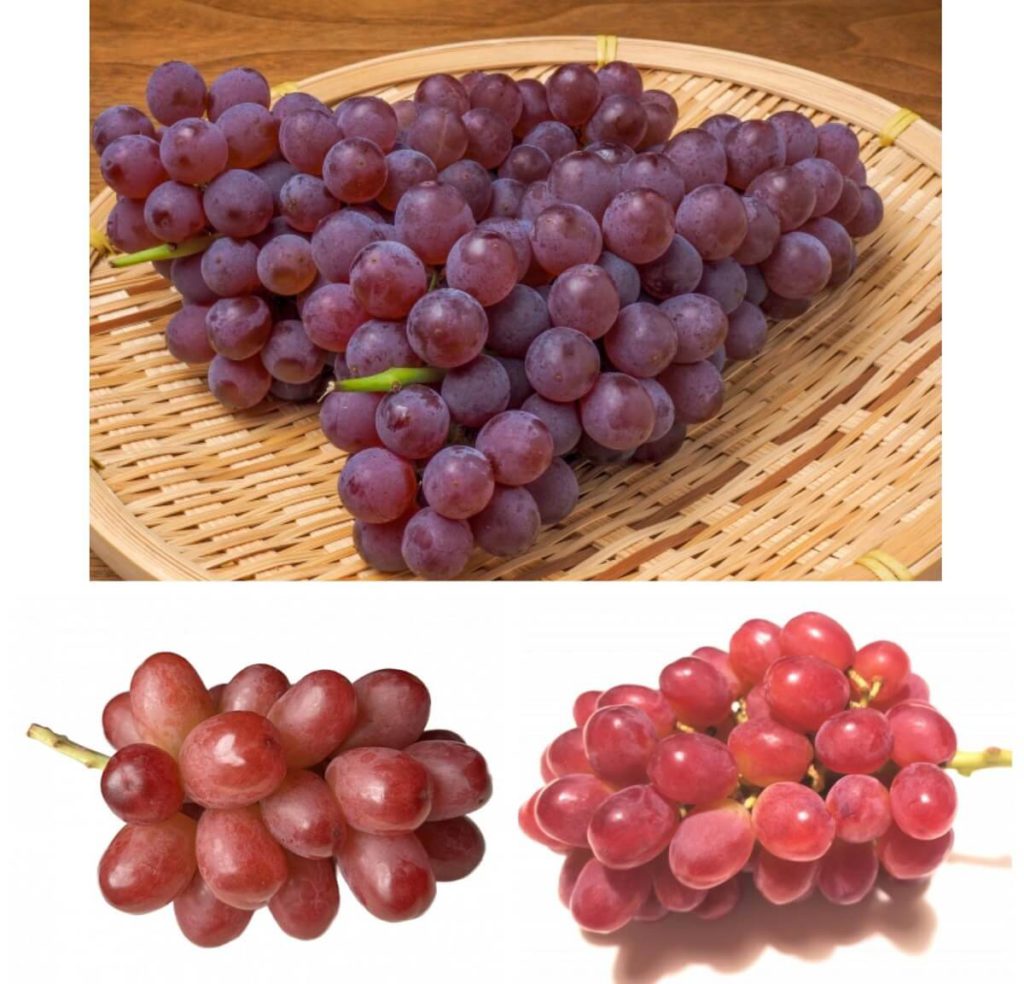
Also here is the list of black grapes: Kyoho (巨峰), Pione and Campbell Early.
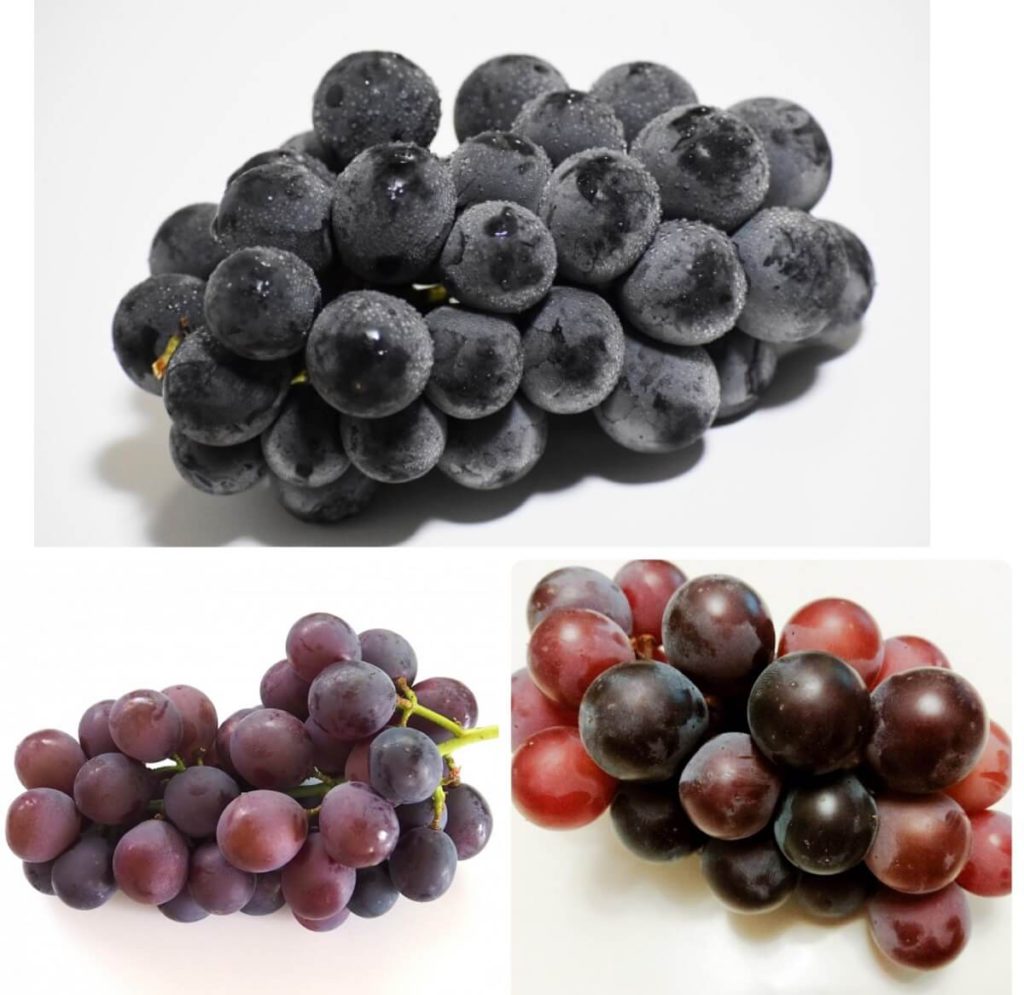
Finally, here are the yellow-green varieties such as Shine Muscat, Muscat of Alexandria and Niagara.
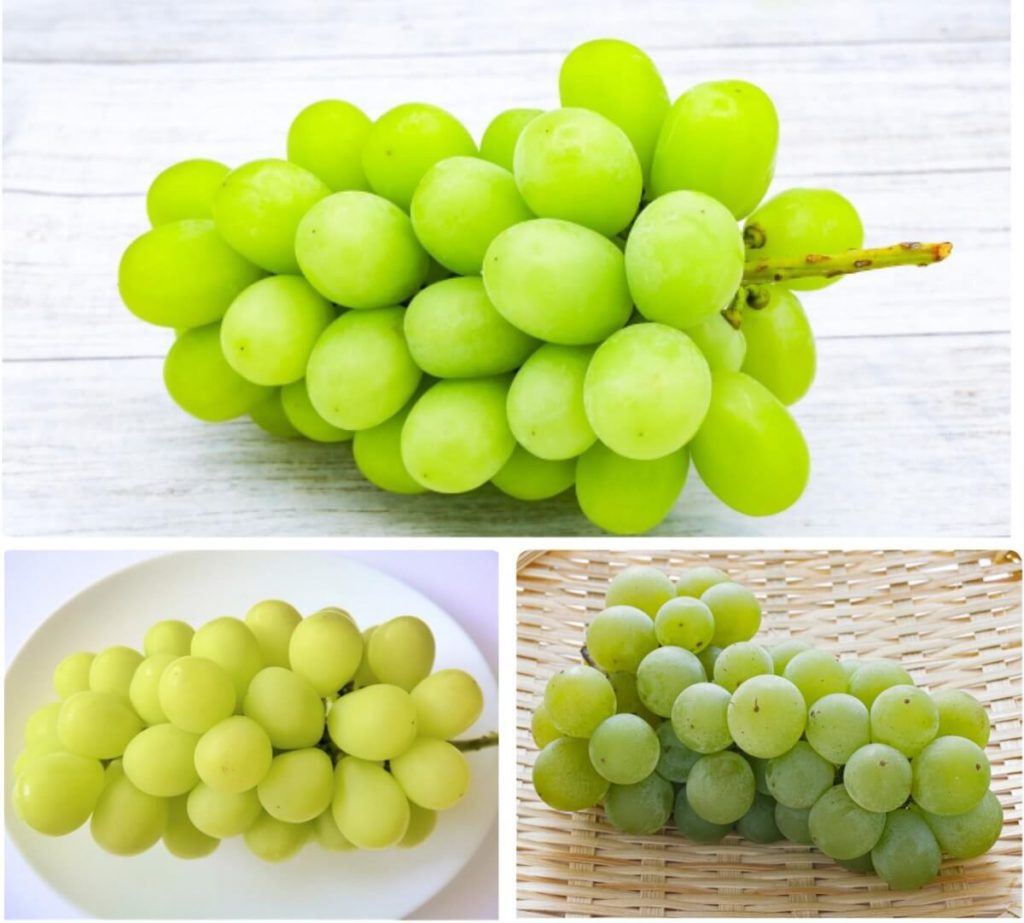
Pears (梨 なし)
It’s said that Japanese people started eating pears in the Yayoi period (the fourth century BC〜the third century AD) The evidence of this comes from the seeds that have been found in the Toro Ruins.
In the Edo period, the cultivation technique improved which led to over 100 kinds of pears growing in orchards all across Japan.
In the Meiji period, the Twenty Century pear (二十世紀) was discovered in Matsudo City and the Chojyuro pear (長十郎) was later discovered in Kawasaki City. They formally boasted that they have the majority of the pear’s cultivation in Japan.
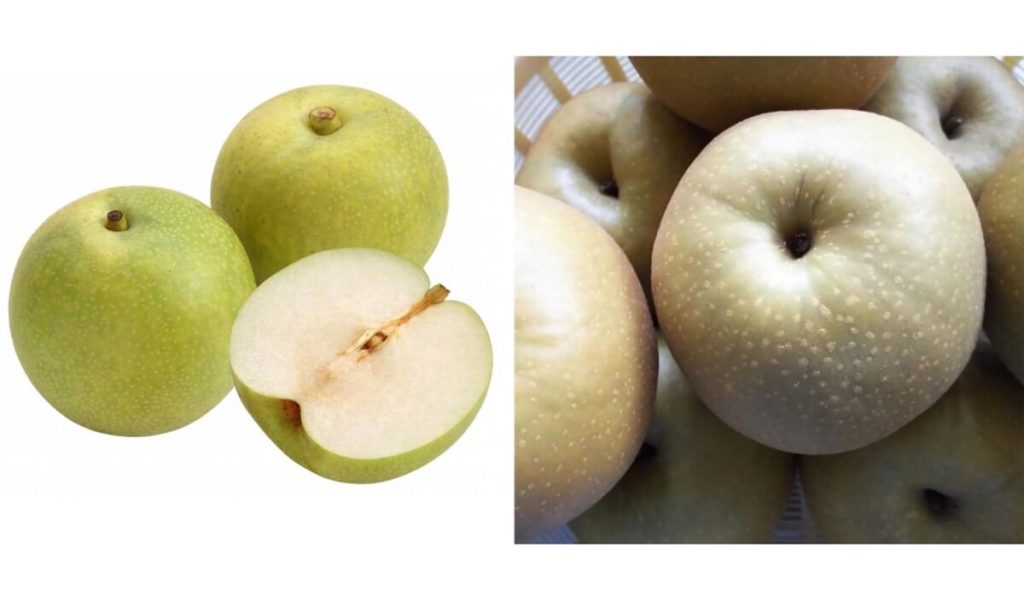
Today, the main cultivation districts are in Chiba, Ibaraki and Tochigi. However, pears are also cultivated all over Japan at a smaller scale.
Japanese pears are categorized into two varieties which are red and green.
The popular kinds of red pears are Kosui (幸水), Hosui (豊水), and Niitaka (新高).
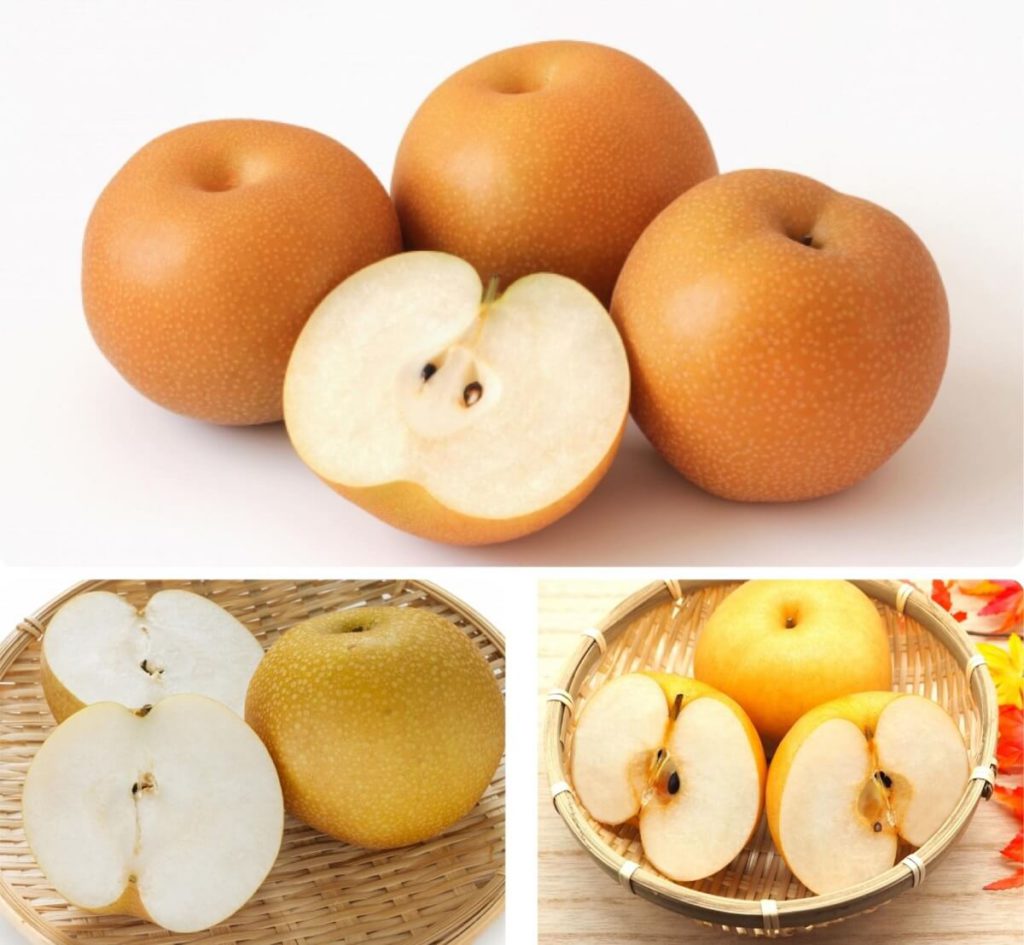
In terms of the green kinds, there are Twenty Century, Yakumo (八雲) and Kikusui (菊水).
Even more unique are the larger pears like Atago (愛宕) which weighs over one kilogram and is three times as heavy as the common sized ones.

Apples (林檎, りんご)
Apples are mainly cultivated in the northern area of Japan. There are about 2000 kinds in total in the country.
Apples are categorized into seven groups based on their original parents and put into three stages of ripening which are early, medium and late.
However, I’ll introduce some famous apples categorized by their color in this blog.
〜Red apples
The typical red apple is the Fuji apple which was made in Fujisaki-cho in Aomori. Fuji accounts for 50% of the domestic produce and boasts the largest growth production in the world.
It tastes very sweet and is a bit crisp.
As a side note, Sun Fuji is a kind that absorbs sunlight without needing to be put in a bag.
〜Green apples
Next, I’m going to tell you about the green apples which are from Fukushima. The Ourin (王林) variety is well-loved by everyone because of its softness. It smells sweet and the aroma comes drifting through the air. What’s more, they can be kept for a long time and are easy to store in a cool place.
〜Yellow apples
Lastly, this is the yellow apple known as Shinano Gold which is from Nagano. It’s one of the minor kinds but it has a reputation for its taste. It is rich and has a higher sugar content than other varieties.
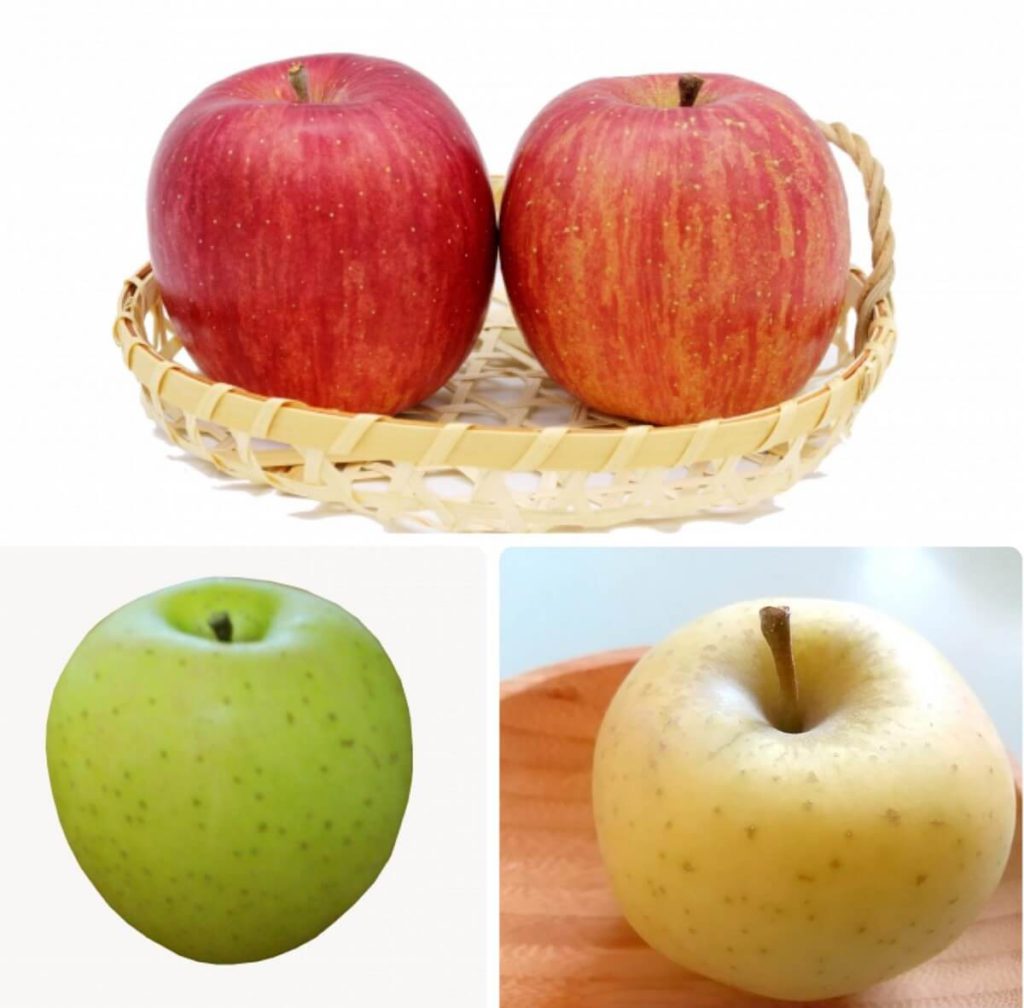
Next, I’ll show you rare kinds of apples.
First is a small type of apple, Kotoku(高徳), which is full of honey inside. Another is a Nakanoshinku (なかの真紅) which has red flesh. It was developed in Nakano City in Nagano by a farmer by selective breeding.
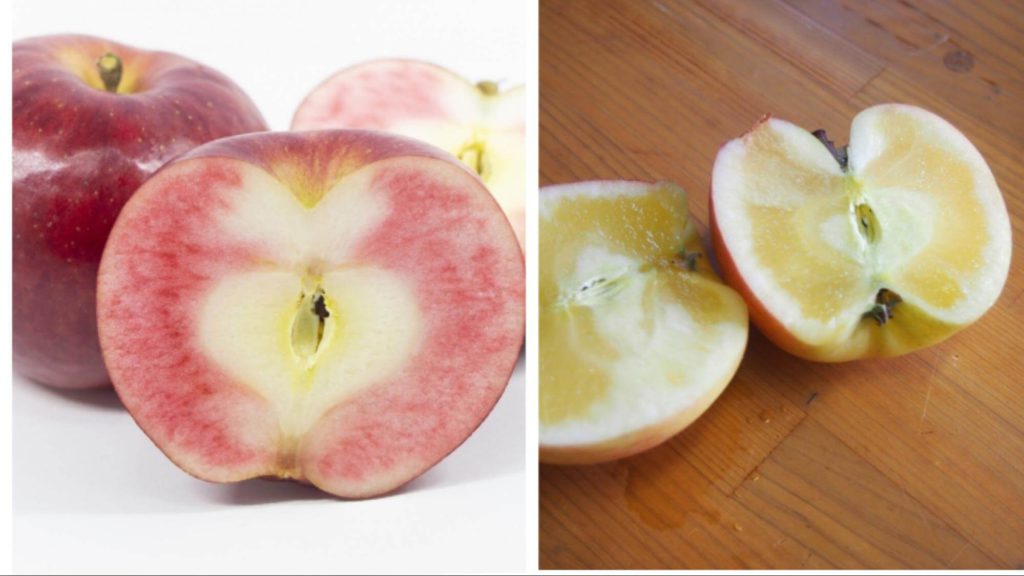
Persimmons (柿, Kaki)
Persimmons first came from East Asia in such countries as China, Korea and Japan. They are cultivated all across Japan and have been familiar to Japanese people all the way from ancient times. So, persimmons have often appeared in old Japanese books.
Actually, there have been persimmon trees located on many family’s property. We have Hoshigaki which is a kind traditionally used for making dried persimmons. I would say persimmons hanging on the eaves is one of the typical autumn scenes in Japan.
Persimmons are categorized into two kinds which are sweet persimmons and astringent persimmons.
The main growing districts are Wakayama, Nara, Fukuoka, Gifu and Nagano.
These are the most popular sweet persimmons: Fuyuu (富有), Jiro (次郎) and Hiratane (平核無). Also this is the best astringent persimmons: Ichida gaki (市田柿) which are suitable for dried persimmons.
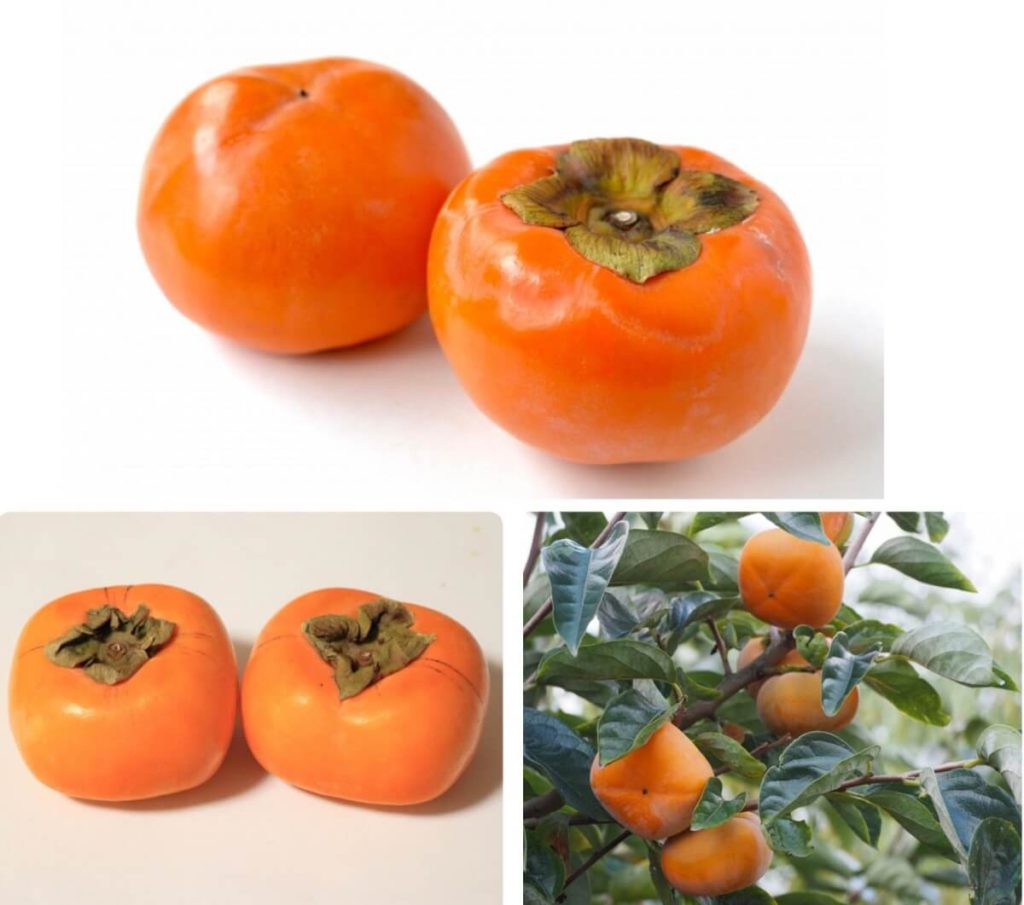

In addition, persimmons are commonly known as a fruit but they are also used for some traditional dishes such as Namasu(なます), Shiraae (白和え), as well as salad. They tend to go well with vinegar or dashi broth.
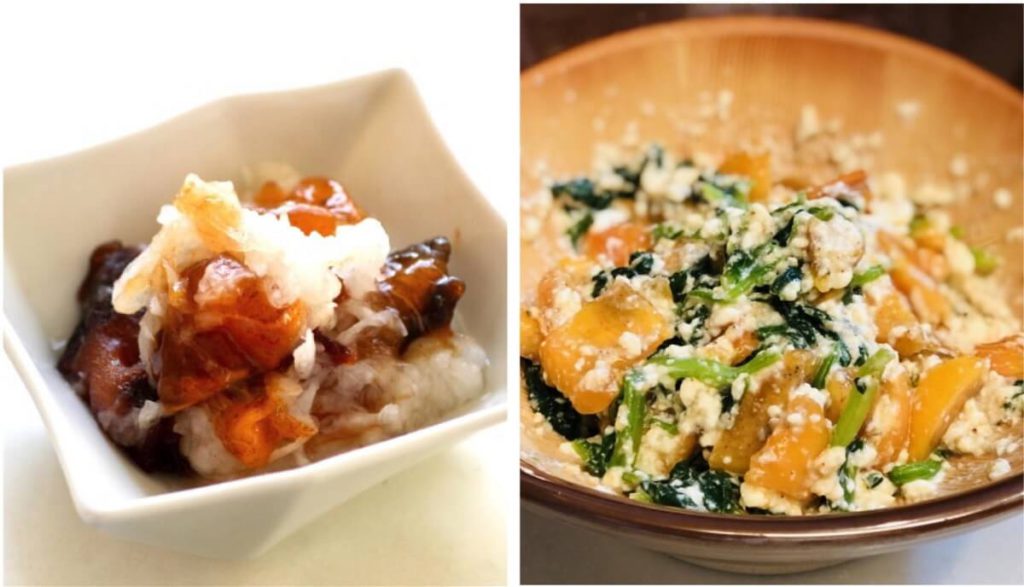
Figs (無花果, イチジク)
Figs are considered to be one of the first plants along with grapes that were cultivated by humans. You can find evidence of this on wall paintings in the pyramids or from tales written in the Old Testament with figs as a forbidden fruit.
There are two theories as to how figs came to Jagan, one is from China and the other is from Europe.
Currently, they are cultivated in Wakayama, Aichi, Hyogo, Fukuoka and Osaka. The famous kinds are a red fig for Masui Daophine (桝井ドーフィン), Toyomitsuhime (とよみつひめ), a green for Kadota (カドタ) and a black for Viollette de Sollies (ビオレソリエス).
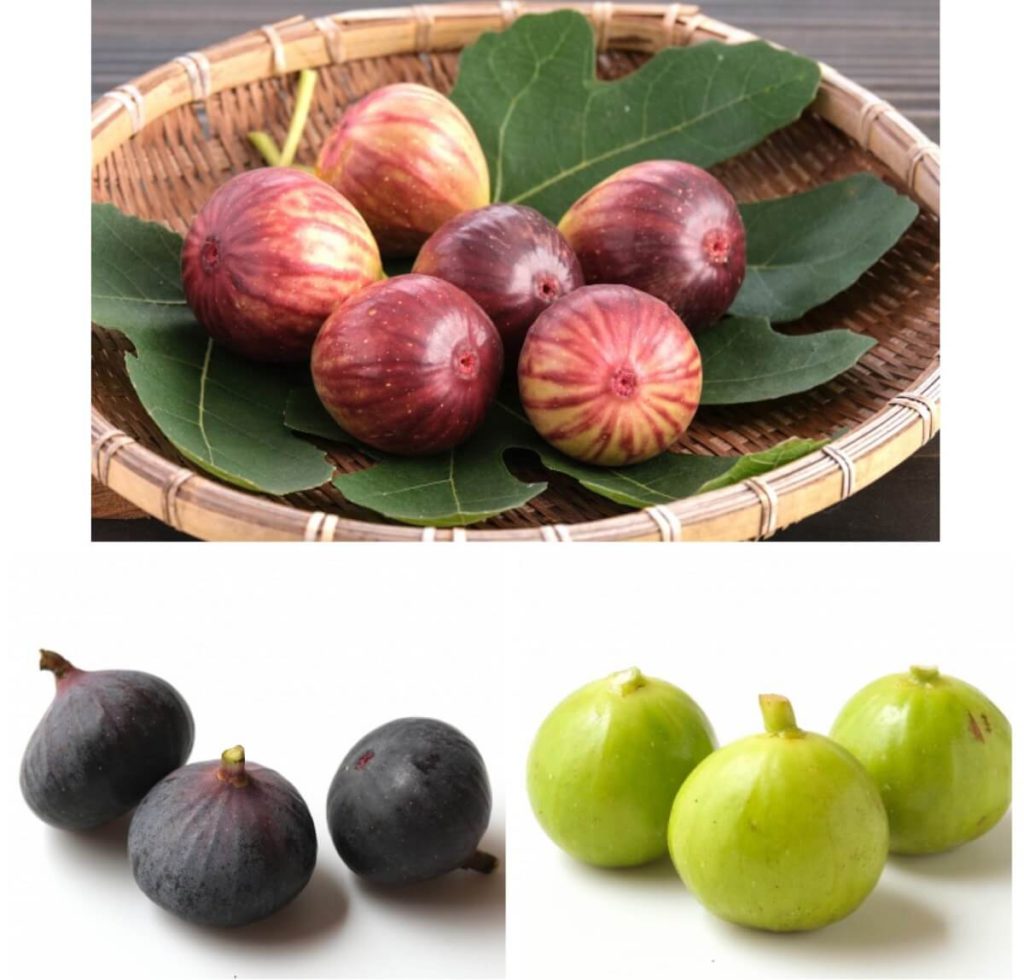
Figs are well known as a fruit which appears in autumn and they are increasingly popular for dessert in Japan.
However, figs are useful for salads or meat dishes. Figs go well with cream cheese and raw ham. Bruschetta with figs is nice, too!
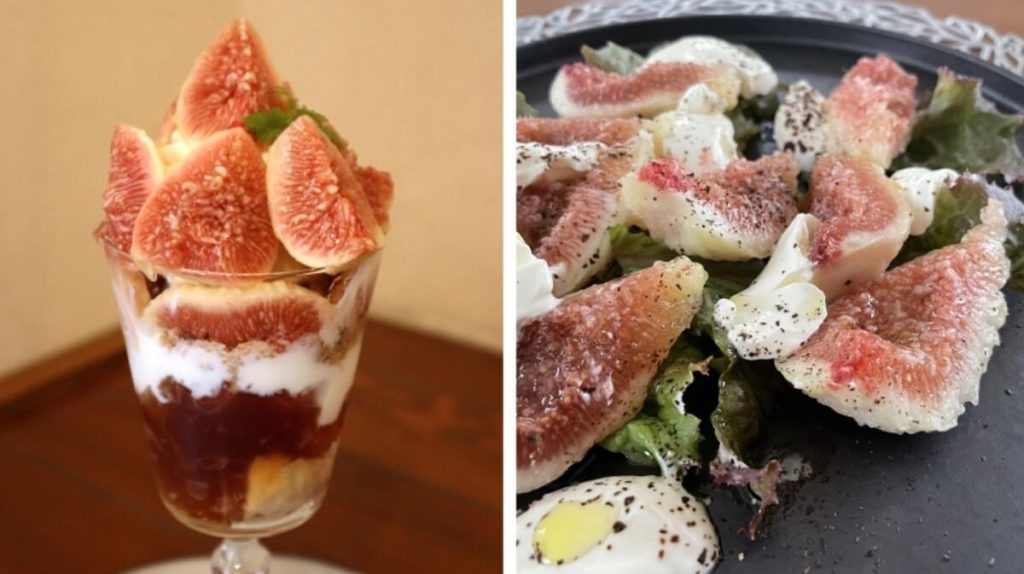
Things That Bother Farmers
Typhoons often come to Japan in autumn and the bad weather comes as a blow to farmers. It’s a serious issue for producers and we can do nothing to prevent the workings of nature. However, we can help farmers by buying B-rank fruit online at a reasonable cost. Don’t you think that it’s really give and take?
Also, Japan has seen an increase in the number of fruit-based thefts in recent times. There have been many cases where over 100,000 yen worth of fruit was stolen from local producers.These thefts usually occur at night and by a group of three to four individuals.
I hope this bad issue will resolve itself in time.
Final Note
Thank you for reading my article to the end. What would you like to do in autumn? I think that having seasonal foods is the best way to enjoy the season.
Enjoy fresh fruit as much as you like. See you later!
Brand Ambassador of kyoto Denim company, Kimono dresser, Japanese flower arrangement instructor I was born and raised in Osaka, I know this area like my backyard. I’d like to introduce Japanese culture and good points to someone from overseas. That’why I study English every day. Please feel free to ask me if you need anything.



